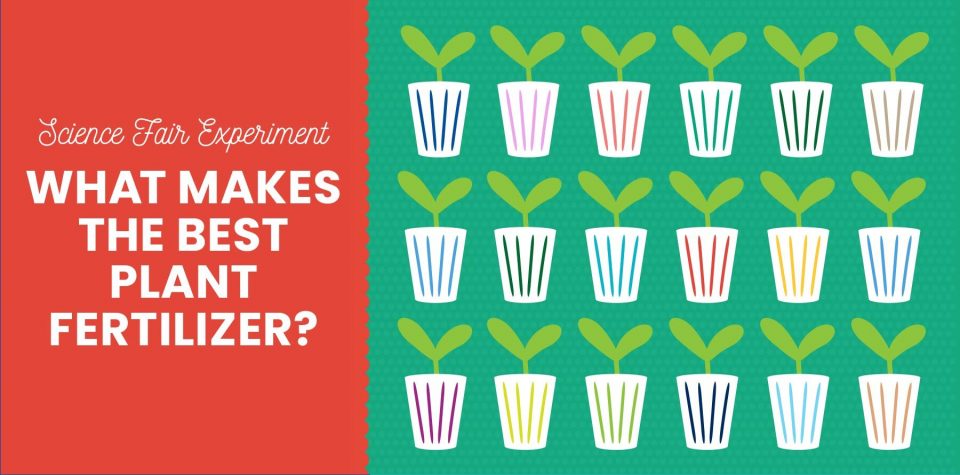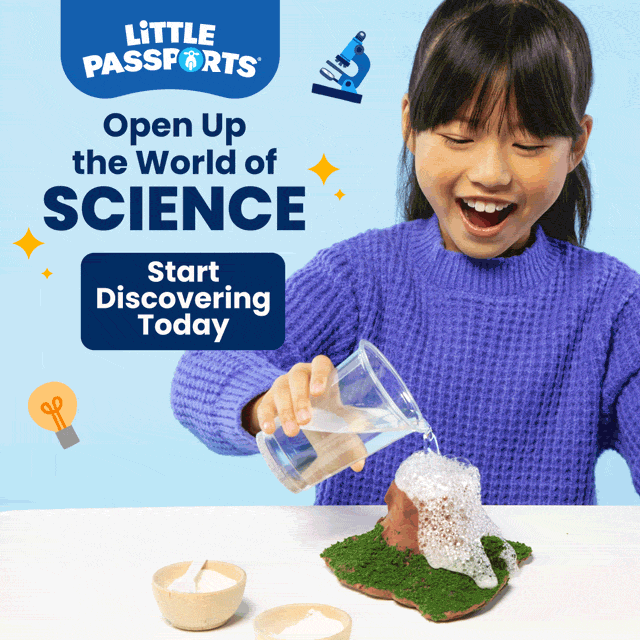
Science Fair Experiment: What Makes the Best Plant Fertilizer?
The best science fair experiments for kids are hands-on and allow children to complete the project with little to no help from adults. This science fair project fits the bill as it explores basic botany, the life cycle of plants and their nutritional needs. It’s well suited for grades 3–5, though middle schoolers could elaborate on the concept with specialized fertilizer mixes and a longer period of growth to measure their results.
Ready to grow some plants? Let’s go!

Materials
- Clear plastic cups
- Potting soil
- A high-nitrogen fertilizer (blood meal is a good choice)
- A high-phosphorus fertilizer (try bone meal)
- A high-potassium fertilizer (kelp meal or potash)
- A balanced fertilizer
- Organic compost
- Permanent marker
- 1 package of bean seeds (Blue Lake is easy to find and sprouts quickly)
- Baking sheet or other tray
- Water
- Notebook
- Pencil
- Ruler
Instructions
- Poke a small hole at the bottom of each cup for drainage.
- Fill each cup about 2/3 full with potting soil.
- Add a teaspoon of each fertilizer to a different cup and stir well. Keep one cup without fertilizer for comparison. Be sure to label the cups with the marker.
- Press two or three bean seeds into each cup, making sure to keep them against the side of the cup where you can see them sprout. Place the beans evenly around the cup, and plant them about an inch deep.
- Place the cups on the baking sheet and water slowly until water begins to drain out the cups.
- Place the cups on a sunny windowsill and wait for the beans to sprout. Sprouting should take 2-5 days.
- Once sprouting occurs, keep good records of the dates of each, noting differences for each fertilizer cup.
- As roots, stems and leaves begin to form, measure daily and note the growth for each fertilizer cup as well.
- Be sure to give cups a quarter turn each day so each bean sprout gets equal time in the sun.
The Science
There are three major nutrients that plants need to grow and thrive: nitrogen (N), phosphorus (P) and potassium (K). Nitrogen helps leaves to green up and grow, phosphorus assists in root growth and the development of flowers and fruits, and potassium helps the plant’s internal functions.Bags of fertilizer are labeled with numbers of N-P-K to show how much of each nutrient they contain. The higher the number, the more concentrated the dose. A balanced fertilizer should have even numbers; 10-10-10 is the standard. By separating the nutrients, young science fair hopefuls can explore how each one affects the germination and growth of their bean plants and make comparisons.
Questions to Explore for the Science Fair
- How does each nutrient and fertilizer type affect the germination of the bean?
- How does each nutrient and fertilizer type affect the growth of the bean plant?
- Is there a “best” plant food out there?
- What happens if you adjust the fertilizer amounts?
- What happens if you combine different fertilizers?
- Is there such a thing as too much fertilizer? How can you tell?
There are many ways to customize this experiment. Older students may enjoy trying to come up with the perfect fertilizer mix for growing beans, or they may raise the level of difficulty by experimenting with different fruits, vegetables or flowers. You could also adjust the experiment to see if organic fertilizers are more or less effective than manufactured ones. The more time allowed for this experiment, the more variations you can try, so start well ahead of your school’s science fair!

